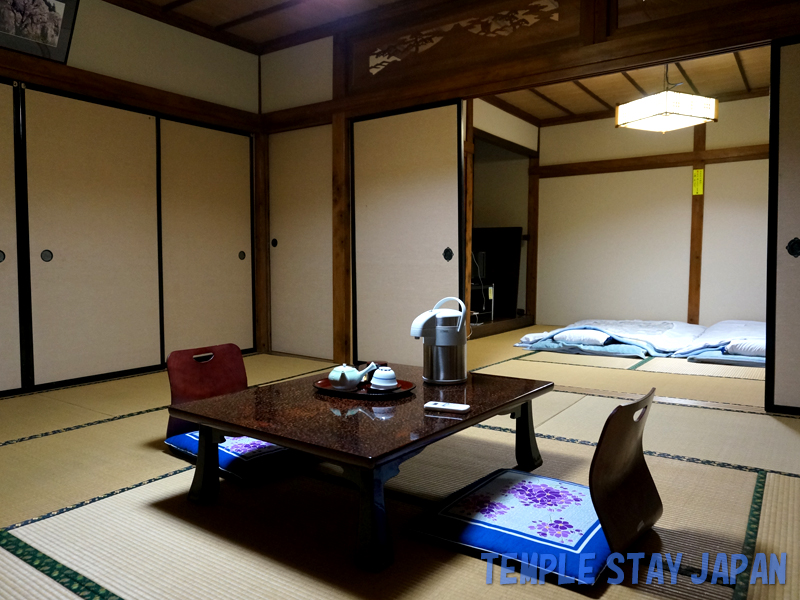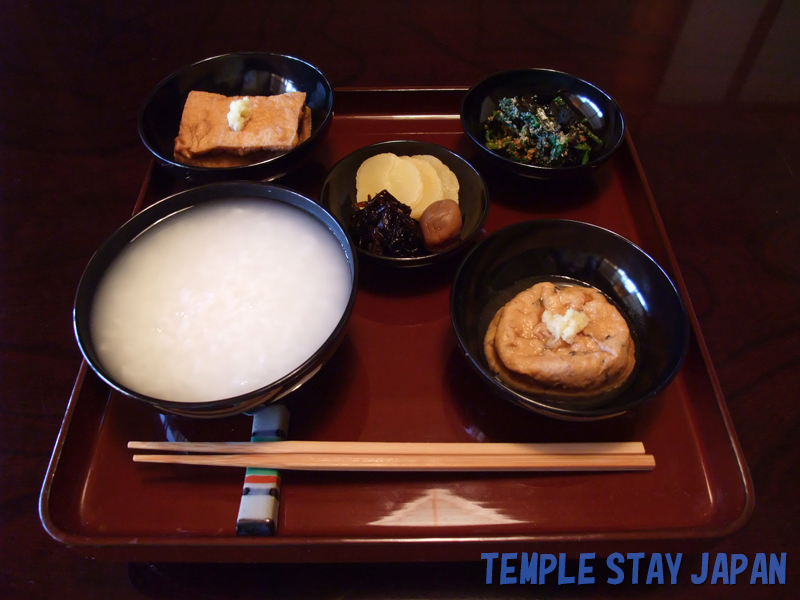Chubu– category –
-

Yamamotobo temple stay (Yamanashi)
Yamamotobo is a temple founded by Nittyo, one of the six direct disciples of Nichiren, who founded Kuonji Temple. We stayed in two Japanese-style rooms, one with 10 tatami mats and the other with 8 tatami mats. I could see the Sanmon Gate of Kuonji Temple from the window. -

Gokui shrine stay (Nagano)
This shukubo is the former Tokuzenin of Togakushi Shrine. It has a beautiful thatched roof noted as a Japanese cultural asset. This shukubo is famous for Togakushi soba (buckwheat noodles), which descended from the Edo period. They also served sake that had been dedicated to the gods. -

Taikoji temple stay (Mie)
Taikoji Temple was founded in the 8th century. It is located about a 10-minute walk from Futamigaura, famous for its Meoto Iwa (couple rocks). A youth hostel is run in the temple.I stayed in a 6 tatami Japanese-style room. In front of the window was a small but relaxing garden. -

Takeda-ryokan shrine stay (Nagano)
This is the shukubo where Shingen Takeda (1521-1573), a great feudal load and warrior prayed for victory. I had Togakushi soba (buckwheat noodles) for dinner (on an all-you-can-eat soba plan). They served fresh soba noodles using soba harvested in their own fields. -

Tyosyoji temple stay (Nagano)
It is mandatory for guests staying at this shukubo to participate in chanting sutra, zazen and breakfast (rice porridge) in the morning. Reservations are required for shojin (vegetarian) course dishes. They also have a shojin cafe, where a steamed laver plate (steamed laver, black bean tea and pickles) is served. -

Jochiin temple stay (Nagano)
This is also a shukubo of Zenko-ji temple; it is also called Dainichi-do and enshrines the main principle of the two images of Dainichinyorai (Mahavairocana), called Taizo and Kongo. They serve shojin vegetarian cuisine and they use pesticide-free vegetables harvested from their own fields. -

Daizenji temple stay (Yamanashi)
Daizenji Temple introduced grapes to Katsunuma for the first time; Katsunuma is now a grape production site. main hall (Yakushido), a national treasure is a typical main hall of esoteric Buddhism that represents the Kamakura period (1185 to 1333). In this hall, I received zazen instruction. -

Kichizyoin temple stay (Nagano)
I stayed here at the time when the principal image of Zenkoji-temple was open to the general public (this is only held once every seven years). I was able to attend the morning services and the kaidan tour as well as the guided tour of the precinct of Zenko-ji temple. -

Soujiji-Soin temple stay (Ishikawa)
Souji-ji is an old temple of the Sodo sect which was opened in 1321. Together with Eihei-ji temple in Echizen, it enjoyed prosperity as the head temple of the Sodo sect. You are able to receive instructions on zazen practice and eat shojin vegetarian cuisine. You can stay for zazen only up to two nights in principle. -

Eisyoji temple stay (Gifu)
This temple appeared with the name of Manpuku-ji in a famous novel, Yoakemae (Before Dawn) written by Toson Shimazaki , a prestigious international novelist.The guest rooms consist of two sections, two four and half tatami mat spaces. I ate shojin vegetarian cuisine. At night, I received instruction on zazen.










